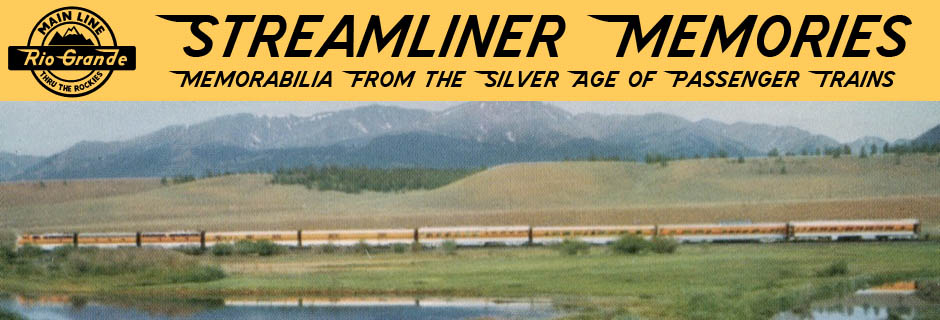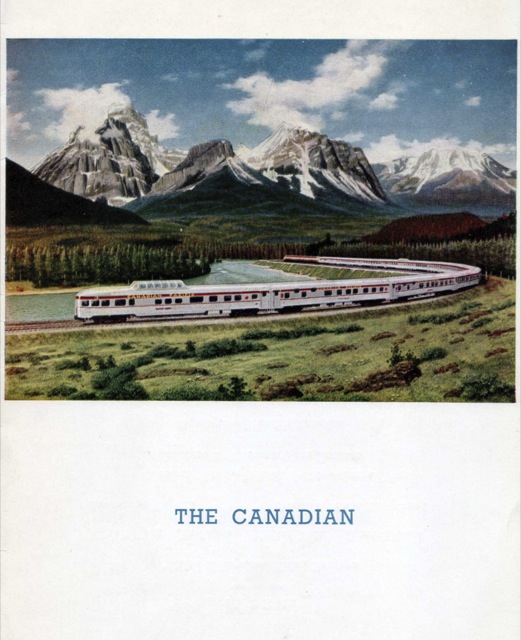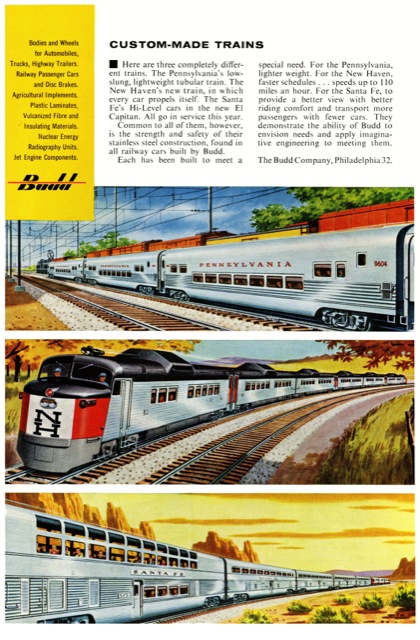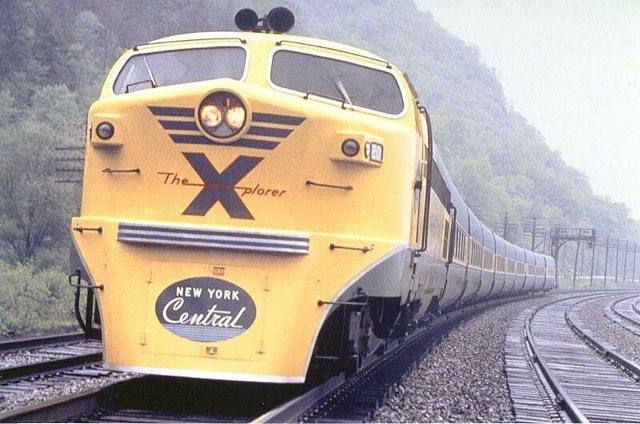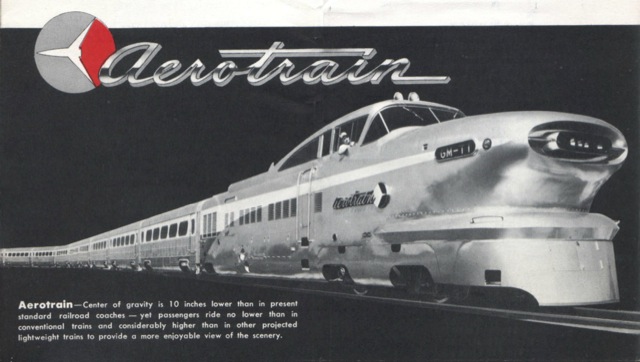On June 24, 1956, the Pennsylvania Railroad inaugurated the Keystone, a twice-daily Washington-New York train that used a new design of coaches built by Budd. The floors at the ends of the cars were of normal height so that doorways matched the platforms that existed at every station along the route. But in keeping with the Talgo low-floor philosophy, the centers of the cars were lowered, reducing the car’s center of gravity.
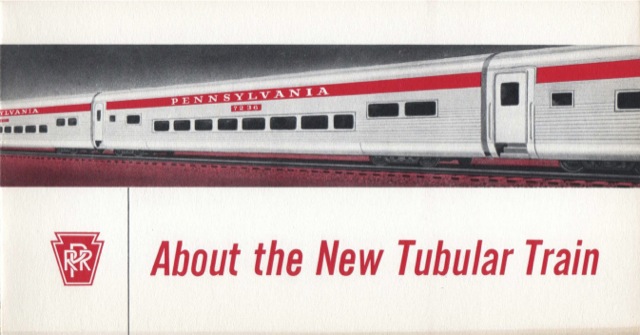
This brochure describes the supposed advantages of a train with a lower center of gravity. There is no date but the brochure was printed well before the cars were completed. The actual cars did not have a red stripe, and the word “Pennsylvania” was in raised letters at the same height as the end windows. The cars were numbers in the 9600s and the numbers, in raised letters, appeared on the ends of the cars at the same height as the railroad name. Click image to download a 1.5-MB PDF of this four-page brochure.
The lower center of gravity supposedly allowed the train to take curves at higher speeds without worries the cars would tip over. For some reason, Budd and Pennsylvania called this a “tubular train,” as if all normal steel passenger cars were not, in some sense, tubes.
Continue reading →
